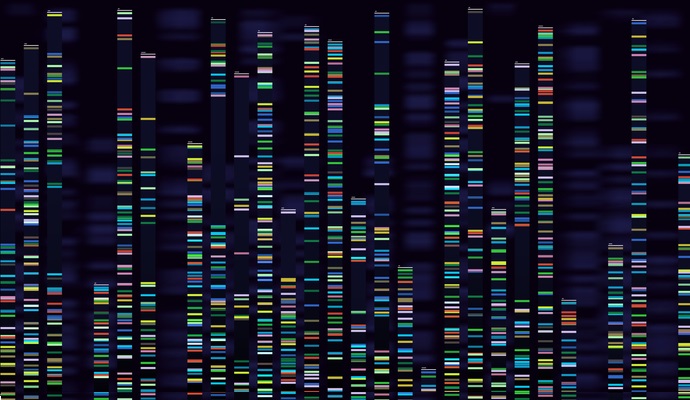Genetic Sequencing Study Identifies 102 Genes Associated with Autism
The analysis is the largest genetic sequencing study of autism to date, and the results could help providers design targeted treatments for the condition.

Source: Getty Images
- Researchers conducted a large-scale genetic sequencing study of autism spectrum disorder (ASD) and identified 102 genes associated with the condition, which could help clinicians better understand ASD and how to treat it.
The study was the largest genetic sequencing study of autism to date and involved an international team of researchers from more than 50 sites. The team collected and analyzed more than 35,000 participant samples, including nearly 12,000 with ASD.
Researchers used an advanced analytic framework to integrate rare, inherited genetic mutations, as well as those that occur spontaneously when the egg or sperm form, known as de novo mutations. The team identified 102 genes associated with autism, 49 of which were also associated with other developmental delays. The large patient cohort in this study enabled researchers to increase the number of genes associated with autism from 65 in 2015 to 102 today.
“This is a landmark study, both for its size and for the large international collaborative effort it required. With these identified genes we can begin to understand what brain changes underlie ASD and begin to consider novel treatment approaches,” said Joseph D. Buxbaum, PhD, Director of the Seaver Autism Center for Research and Treatment at Mount Sinai, and Professor of Psychiatry, Neuroscience, and Genetics and Genomic Sciences at the Icahn School of Medicine at Mount Sinai.
The team was able to obtain such a large sample through the Autism Sequencing Consortium (ASC), an international group of scientists who share ASD data and samples.
Researchers also showed that autism genes affect brain development or function, and both types of disruptions can result in autism. In addition, they found that both major classes of nerve cells – excitatory neurons, which trigger a positive and activating change in the downstream neural membrane upon firing, and inhibitory neurons, which trigger a negative change upon firing – can be affected in autism.
“Through our genetic analyses, we discovered that it’s not just one major class of cells implicated in autism, but rather that many disruptions in brain development and in neuronal function can lead to autism. It’s critically important that families of children with and without autism participate in genetic studies because genetic discoveries are the primary means to understanding the molecular, cellular, and systems-level underpinnings of autism,” said Dr. Buxbaum.
“We now have specific, powerful tools that help us understand those underpinnings, and new drugs will be developed based on our newfound understanding of the molecular bases of autism.”
With the rise of precision medicine and the need for more targeted, personalized treatments, researchers have been using advanced tools and genetic sequencing to uncover more information about autism.
Researchers at Princeton University recently used a deep learning algorithm to decode the functional impact of genetic mutations in people with autism. Although the study didn’t reveal the exact causes of autism, researchers found thousands of possible contributors for others to study. The information could help providers better diagnose the condition and understand how autism differs from person to person.
“They say that when you meet one person with autism you have met one person with autism because no cases are alike. Genetically, it seems to be the same way,” said Chandra Theesfeld, PhD and lead author of the Princeton study.
